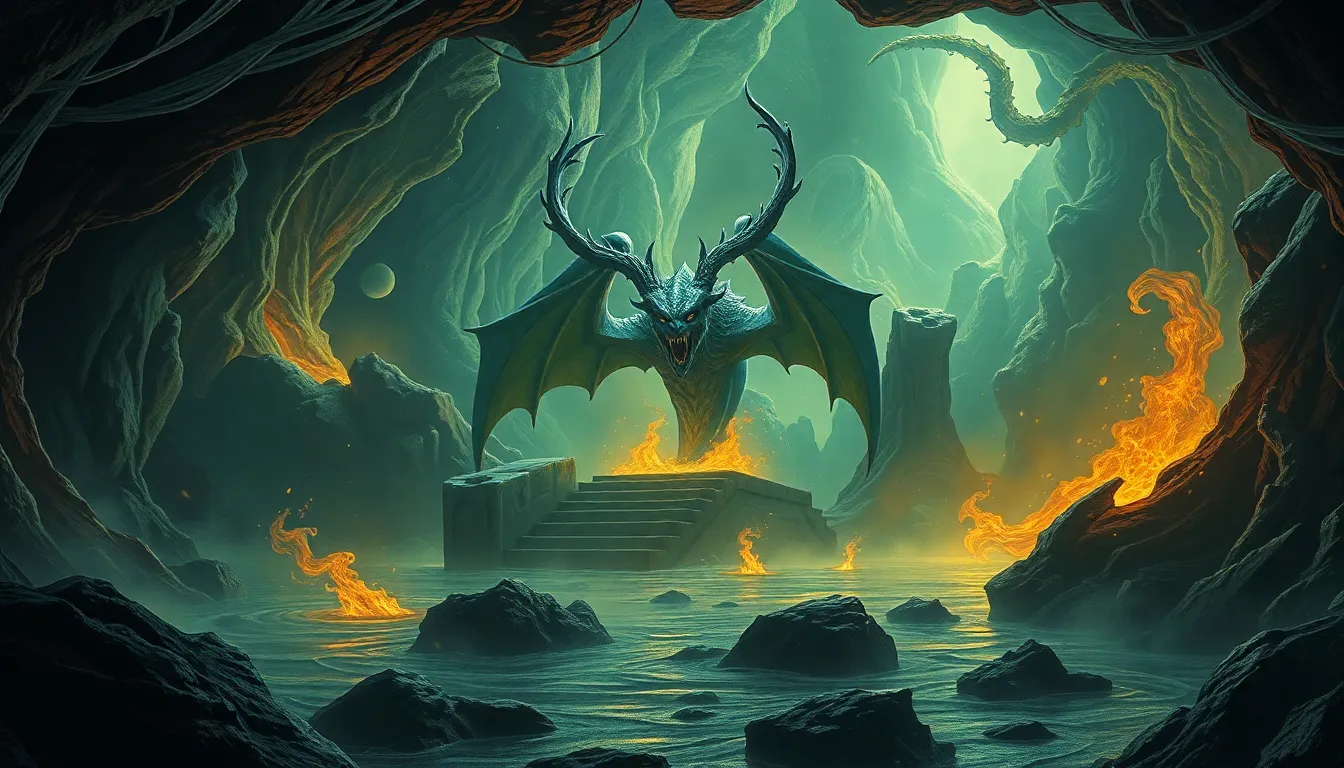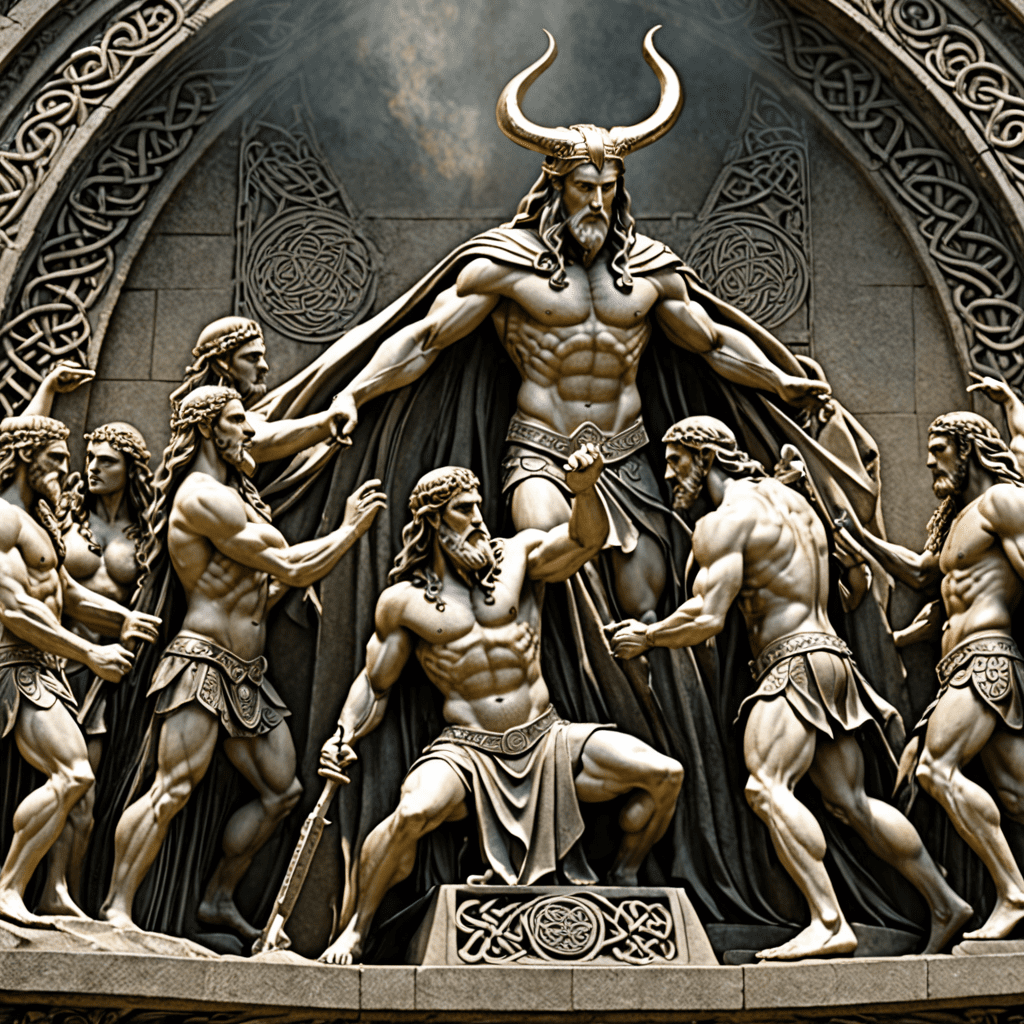Legends of the Underworld: The Myths That Shape Our Culture
I. Introduction to Underworld Myths
Underworld myths have captivated human imagination for millennia, serving as profound reflections of our beliefs about life, death, and the afterlife. They encompass a range of narratives that explore the fate of souls and the realms beyond our earthly existence.
These myths are significant in that they offer unique insights into the values, fears, and hopes of various cultures. They shape our understanding of morality, ethics, and the human condition. This article aims to explore the rich tapestry of underworld myths across different cultures, their historical contexts, and their enduring influences on modern society.
II. Historical Context of Underworld Legends
Throughout history, civilizations have developed their own views on the afterlife, often reflecting their cultural values and social structures. Ancient Egyptians believed in a journey through the afterlife, guided by the god Osiris. In contrast, ancient Greeks envisioned the underworld as a shadowy realm ruled by Hades.
A. Ancient civilizations and their views on the afterlife
- Egyptians: The afterlife was a journey to the Field of Reeds, judged by Osiris.
- Greeks: Souls faced judgment by Hades, leading to Elysium or Tartarus.
- Mesopotamians: The underworld, known as Kur, was a dreary place for all souls.
- Hindus: Beliefs in reincarnation and the cycle of samsara shaped their view of life and death.
B. Evolution of underworld myths through time
As societies evolved, so did their underworld myths. With the rise of monotheistic religions, many ancient beliefs were reinterpreted or replaced. Yet, the core themes of judgment, transformation, and moral consequence persisted.
C. Cross-cultural comparisons of underworld beliefs
Despite the differences in narratives, many cultures share common themes in their myths about the underworld:
- The idea of a journey after death.
- The presence of a judge or guide for souls.
- Consequences based on earthly behavior.
III. Prominent Underworld Deities Across Cultures
Various cultures have personified their underworld through deities, each with unique attributes and stories that embody their beliefs about death and the afterlife.
A. Hades in Greek mythology
Hades, the god of the underworld, ruled over the realm of the dead, overseeing the souls’ journey and ensuring that the balance of life and death was maintained.
B. Osiris in Egyptian mythology
Osiris, the god of the afterlife, was central to Egyptian beliefs about resurrection and eternal life. He judged the souls of the deceased, determining their fate in the afterlife.
C. Yama in Hindu and Buddhist traditions
Yama, the god of death, serves as a guide for souls in both Hindu and Buddhist beliefs, highlighting the importance of karma and the cycle of rebirth.
D. Other notable figures: Inanna, Persephone, and more
Figures like Inanna from Sumerian mythology and Persephone from Greek mythology symbolize the cyclical nature of life and death, embodying themes of loss and rebirth.
IV. The Underworld as a Symbolic Space
The underworld often serves as a powerful symbolic space in myths, representing transformation and the moral trials of humanity.
A. The underworld as a place of transformation
Many myths depict the underworld as a realm where souls undergo significant transformations, reflecting the idea that death is not an end but a new beginning.
B. The role of the underworld in moral and ethical narratives
Underworld myths frequently explore themes of justice, morality, and consequence, serving as cautionary tales that illustrate the repercussions of one’s actions in life.
C. Psychological interpretations of the underworld
Psychologically, the underworld represents the unconscious mind, where fears, desires, and unresolved conflicts lie. Engaging with these myths can provide therapeutic insights into personal struggles.
V. Underworld Myths in Literature and Art
Underworld myths have profoundly influenced literature and art, inspiring countless works that explore the human condition and the afterlife.
A. Depictions of the underworld in classical literature
From Homer’s “Odyssey” to Dante’s “Inferno,” classical literature has depicted the underworld as a rich narrative space where heroes confront their fates and moral dilemmas.
B. The influence of underworld myths in modern storytelling
Contemporary novels, films, and series often draw on underworld themes, using them as metaphors for personal struggle, redemption, and the search for meaning.
C. Artistic interpretations across different mediums
Artists have depicted the underworld in various forms, from paintings to sculptures, capturing the eerie beauty and emotional weight of these myths.
VI. The Role of the Underworld in Religion and Spirituality
Underworld beliefs have played a crucial role in shaping ancient religious practices and continue to influence contemporary spiritual interpretations.
A. Underworld beliefs in ancient religious practices
Many ancient religions integrated underworld myths into their rituals, using ceremonies to honor the dead and ensure safe passage to the afterlife.
B. Contemporary spiritual interpretations of the underworld
Modern spiritual movements often reinterpret underworld myths, finding relevance in concepts of personal growth, healing, and the cyclical nature of existence.
C. Rituals and ceremonies related to the afterlife
Various cultures continue to practice rituals that honor the dead and acknowledge the significance of the afterlife, reflecting the enduring influence of underworld myths.
VII. Underworld Myths and Human Psychology
Underworld myths resonate deeply with human psychology, offering insights into our fears, hopes, and the nature of existence.
A. The archetypal significance of the underworld
As an archetype, the underworld represents the unknown, challenging individuals to confront their deepest fears and desires.
B. Underworld narratives as reflections of human fears and hopes
These narratives often mirror our existential anxieties, serving as a canvas for exploring themes of mortality, legacy, and the quest for meaning.
C. Therapeutic implications of engaging with underworld myths
Engaging with underworld myths can be therapeutic, allowing individuals to explore their inner landscapes and confront unresolved issues related to loss and fear of death.
VIII. The Underworld in Popular Culture
In recent years, the underworld has found its way into popular culture, influencing films, television, and video games.
A. The impact of underworld myths in films and television
Movies like “The Matrix” and animated features like “Coco” illustrate how underworld themes resonate with audiences, exploring concepts of life, death, and the afterlife.
B. Video games and interactive narratives exploring the underworld
Video games such as “Hades” and “God of War” invite players to engage with underworld myths, offering interactive experiences that delve into themes of fate and redemption.
C. The resurgence of interest in underworld myths in contemporary culture
There is a growing fascination with underworld myths in contemporary literature and media, reflecting society’s ongoing quest to understand death and the afterlife.
IX. The Legacy of Underworld Myths in Modern Society
The legacy of underworld myths continues to influence modern moral frameworks and



